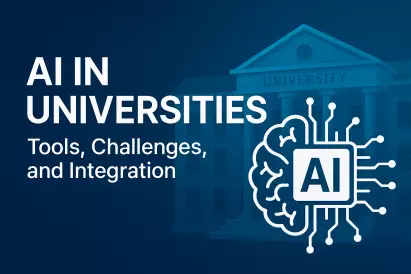Summary: This article explores the evolving landscape of the Master's in Industrial and Operations Management (IOM) in Oceania for 2025. It covers market dynamics, curriculum updates, employability trends, and the broader impact of technology and sustainability on industrial education.
Context and Market Overview
In Oceania—particularly in Australia and New Zealand—Master's programs in Industrial and Operations Management (IOM) are aligning closely with the region’s growth in advanced manufacturing and supply chain sectors.
While granular enrollment data in IOM is not readily available, the upward trajectory in postgraduate education overall provides strong contextual insights.
Recent trends show a consistent increase in enrollment in business and engineering management fields, with about 70% of enrollees being domestic students and 30% international.
This shift is compounded by a growing number of mid-career professionals pursuing upskilling opportunities alongside younger talents at early-career stages.
Macroeconomic and policy drivers playing pivotal roles include:
- Australia’s structural manufacturing challenges amid inflation and global competition
- The $15 billion National Reconstruction Fund advancing sustainability and high-end manufacturing
- Digital transformation through Industry 4.0 technologies like AI, robotics, and IoT
- Rising importance of sustainable operations influenced by ESG and circular economy principles
- Geopolitical tensions boosting the demand for resilient supply chain and distributed operation management
For those curious about related fields, programs in Supply Chain and Logistics also reflect similar market responsiveness.
Curriculum Trends and Specialization Options in 2025
Master's programs in IOM across Oceania are becoming increasingly diversified to meet multi-sector demand. Emphasis is on blending industry relevance with academic rigor through:
- High-demand specialization areas such as supply chain analytics, logistics technology, and sustainable manufacturing
- Interdisciplinary frameworks integrating engineering, data science, business, and sustainability
- Experiential learning formats including VR labs, industry internships, and group capstone projects
- Flexible delivery models—on-campus, hybrid, and online learning—catering to both global and local students
Extended flexibility is now evident in stackable learning modules and micro-credentials, especially relevant to professionals engaging in lifelong learning.
This modular approach echoes trends in fields like Data Analytics.
Skill Development and Employability Outcomes
Graduates from IOM programs enjoy competitive career prospects thanks to a robust combination of technical and soft skills. Key competencies include:
- Technical: Lean manufacturing, Six Sigma methodologies, AI-enhanced analytics, digital twins, and ESG-oriented operations
- Transversal: Problem-solving, project leadership, adaptability, cultural fluency, and remote collaboration savvy
Graduating students typically enter roles in operations analysis, quality control, logistics optimization, process improvement, or sustainability management across industries like technology, healthcare, retail, and manufacturing.
Internships and embedded apprenticeships, often offered through university-industry partnerships, vastly improve placement prospects.
Additionally, students interested in broader management applications may explore programs in General Management in Oceania.
Accreditation Standards, Recognition and Policy Incentives
IOM programs in Australia and New Zealand adhere to strong national academic frameworks—the Australian Qualifications Framework (AQF) and the New Zealand Qualifications Authority (NZQA).
Moreover, international accreditation through AACSB or EQUIS provides additional recognition globally.
Policy reforms such as updated post-study work visas and funding incentives for in-demand skills (e.g. robotics, AI, green manufacturing) are strategically enhancing the region’s reputation as an international education hub.
This internationalization effort shares synergies with multidisciplinary domains such as Innovation and Project Management.
Cost Dynamics and Funding Accessibility
Cost remains a salient consideration for prospective students. International tuition ranges from AUD 30,000 to 50,000 annually. Domestic students, however, benefit from several government subsidies and support packages.
To improve access:
- Universities offer institutional scholarships and merit aid
- Government-backed training schemes subsidize programs aligned with economic and sustainability priorities
- Employers are increasingly funding part-time study for employee upskilling
Programs with strong ROI tend to emphasize quick employment outcomes and salary growth; ROI is particularly high in sectors adopting industrial digitization and green process models.
Interested candidates may also evaluate related ambitions in domains like Industrial and Operations Management in Oceania.
Global Competition and Program Differentiation
Oceania’s IOM market attracts substantial international student interest thanks to quality credentials, favorable immigration policies, and growing tech industry connections.
Outbound students from the region also pursue dual-degree or micro-credential options abroad to acquire global exposure.
Key differentiators among local programs include:
- Hybrid partnerships with EdTech providers for modular and stackable learning
- Localized curriculum content bolstered by international best practices
- Digital learning innovation including online labs, AI tutors, and collaborative apps
This openness to digital transformation finds a common ground with fields such as E-Business and Digital Marketing.
Ongoing Challenges and Future Projections (2025–2028)
Challenges persist, including affordability concerns for overseas applicants, limited digital-operations hybrid faculty, and uneven R&D infrastructure in sustainability and AI.
Rapid tech cycles also demand constant curricular renewal to maintain market relevance.
Nonetheless, the baseline forecast remains positive, bolstered by government backing and deepening industry-academia collaborations. Potential growth areas between now and 2028 include:
- Adoption of AI across supply chain analytics and automation
- Scaling up VR/AR-based learning experiences and simulations
- Modular learning pathways enabling hyper-personalized, lifelong skills acquisition
Prospects are especially bright for students who blend traditional operations management with cutting-edge innovation skills. Students curious about synergistic directions may also consider programs in Creativity Management to enhance design thinking alongside operational strategy.



